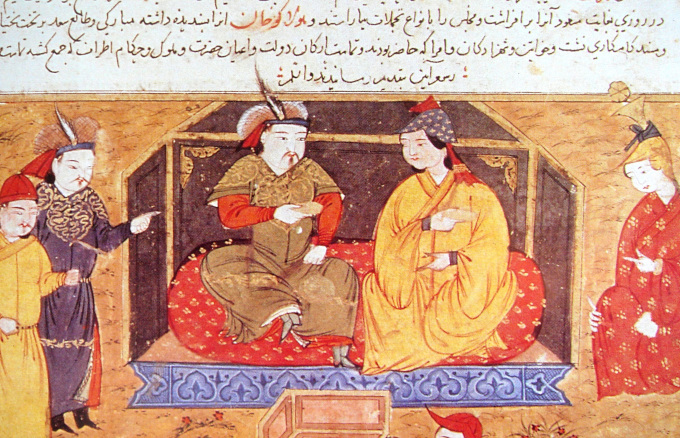
Professor Ge Zhaoguang is, without a doubt, the most important historian of Chinese thought alive. In a few words, his seminal work is focused on comprehending traditional Chinese thinking through a more modern and contemporary model. He also devoted much research to understanding Western approaches to China, and thus, he contributed to a new perception of Western culture from a Chinese perspective.
In his work “Zhongguo sixiang shi” (2001), partially translated as “An Intellectual History of China: Knowledge, Thought, and Belief Before the Seventh Century CE” and “An Intellectual History of China: Knowledge, Thought, and Belief from the Seventh through the Nineteenth Century” (Trans. Michael S. Duke and Josephine Chiu-Duke, Boston: Brill, 2014, 2018), he was the first to outline the importance of Matteo Ricci’s influence in 17th-century China in rethinking its worldview.
In this essay, Ge presents a crucial historical moment – the first debate between Christianity, Islam, and Buddhism before an emperor in Great Mongolia, Möngke Khan. What is most peculiar, with modern hindsight, is the Khan’s response to the Flemish friar, William of Rubruck, who believes he has won the argument. The Khan says, as Ge highlights, that ‘all religions are important like fingers of the hand; you can’t do without a finger.’ In modern terms, we might say that the religion that “wins” is not the one that is best logically structured, but the one that is most humble and tolerant. It is the God that forgives all, sacrifices Himself, and offers to be there every time people need it.
This answer was baffling for Europeans at the time, who had been engaged in bloody religious wars with Muslims for centuries. Still, it also echoes the voice of Pope Francis, who is rushing around the world trying to bring peace and open dialogue.
Professor Ge is not Catholic, nor does he follow the Pope, which makes the essay even more interesting, as it suggests that a search for religious tolerance and humility is strongly felt outside specific religious boundaries.
(Appia Institute)
On August 5, 1253, a tall, ragged European arrived at the camp of Batu, a Mongol general near the River Etilia, known today as the Volga River. With the help of his guide and translator, the Mongols soon learned that this visitor was William of Rubruck (Flemish Franciscan friar Willem Van Ruysbroeck1215–1295). He had journeyed thousands of miles from France, overcoming countless hardships to reach this point. Here, he encountered a diviner from the black Khitan, who informed him that Europeans believed in the legend of “King John” or “Prester John,” who ruled over a Christian nation in the distant East—a belief that he suspected was a fabrication. Later, in his account of the journey, Rubruck expressed his frustration that the locals “could invent a great many stories out of thin air,” claiming that the Sartaq was a Christian, that Mongke Khan and Kublai Khan were also Christians, and thus deserved great respect. However, he regarded all of this as incredulous.
Rubruck also learned of John’s brother, Wang Khan, who had originally been in a place called Karakorum; they had indeed been Nestorian Christians. However, “their ruler has abandoned the Christian faith and converted to idol worship, surrounding himself with idol-worshiping monks who are nothing more than tricksters” (From the Eastern Journey, p. 235).
Rubruck placed great importance on such news since he had heard stories of Prester John back in France and believed them fervently. According to Yang Zhijiu, around 1145, the Bishop of Gabala, Hugh, wrote to the papacy claiming that there was a Nestorian king in the Far East named John who had attacked Persia and even captured Ecbatana in order to reclaim the Holy City of Jerusalem from Islamic control. But who this John truly was remained a mystery. Some suggested he was Yelü Dashi of Western Liao, while others posited he might be a Georgian prince. Regardless, these were mere legends, and during this period, Europeans harbored a prevalent fear of future Mongolian invasions, even though John was considered a heretical Nestorian, and yet he was still a Christian, a brother in faith. Thus, they all hoped that the tales of John were true, as they would ideally provide an ally against the Mongols.
In those years, both the pope and various European kings were deeply concerned about the Mongol advance. Particularly notable was the Mongol incursion in 1241, during which Batu, Kadan, Hadan, and Subutai divided their forces and mounted a second campaign into Europe—successfully defeating the Polish king and the Teutonic Knights, subsequently annihilating the army of the Hungarian king Béla IV and capturing Budapest before advancing toward Vienna. At that time, myths circulated in Europe that the invaders had no faith, but were strong and tall, and typically consumed raw meat, even human flesh. In his Chronica Majora (1240), Matthaeus Parisiensis described them this way: “(The Mongols) swarm across the land like locusts. They bring terrible calamities to Eastern Europe, destroying cities with fire and sword, ravaging forests, leveling fortresses, decimating vineyards, annihilating orchards, and leaving no survivors.” This left an indelible mark on Europe. Even after the Mongol threat receded and the Black Death swept through Europe, this memory remained potent. Some Christians believed it to be divine punishment; thus, in Southern Italy, the “Flagellant Movement” emerged, where adherents would whip each other, often to the point of bleeding, as they paraded through various regions, chanting prayers and singing confessions. Such fervor eventually spread to Northern Italy, Germany, Bohemia, and along the Rhine River. However, that is a story for another time. Yet the reports of the Mongol invasion during the first half of the thirteenth century had already set the papacy and emperors on edge, prompting urgent calls to prepare military responses.
Among the Christian elite in Europe, there was still an inclination to pursue the conversion of the Mongols to Christianity. At the very least, the papacy hoped that the valiant Mongols might unite with Christians to combat Islam. Consequently, Pope Innocent IV sent three missions to connect with the Mongols in 1245. The third mission, traversing Bohemia, Poland, and Kyiv, ultimately arrived in Mongol territory. At its head was the Franciscan missionary John of Pian del Carpine (1180–1252), who later chronicled his travels in The Journey to Mongolia.
It is said that in April 1245, he set out from Lyon and only reached Batu’s camp on the Volga in April 1246. Batu then sent someone to accompany them, and after a four-month-long journey, they arrived at Karakorum. In August of that year, he saw the Great Khan of the Mongols, Güyük (1206-1248), and attended his enthronement ceremony. However, perhaps the Papacy still did not understand the Mongols; the letter carried by Pian del Carpine from the Pope had some elements of persuading the Mongols to convert to Christianity, which offended them. As a result, Güyük Khan’s reply was extremely arrogant, not only completely ignoring the call for conversion but also asserting that the western conquests of the Mongols were protected by the Eternal Heaven. He warned that if you wish for peace and our protection, you should come and pay homage; if not, we will meet in battle. This arrogant and fierce reply was later preserved in both Latin and Persian, and the distinguished orientalist Paul Pelliot conducted detailed research on it in his book “The Mongols and the Papacy” written a hundred years ago (1923). This reply likely left the Papacy very disappointed, as it was clear that Pope Innocent IV’s efforts to win over the Mongols had failed completely.
It was against this backdrop of European bewilderment concerning the Mongols that William of Rubruck arrived in Mongol territory, carrying a certain mission, following in the footsteps of Pian del Carpine.
Ⅱ
William of Rubruck was a friend of the French King Louis IX (1214-1270). And who was Louis IX? If you’ve been to Paris, you surely know the two famous islands on the Seine; the smaller one is named the Île Saint-Louis, in his honor. In French history, he is considered a remarkable king who ascended to the throne at the age of twelve and ruled France for over forty years. During his reign, he not only ended the conflict between the Capetians and the Plantagenets but also brought regions like Provence under French control. Furthermore, he proposed the creation of the famous Sorbonne University in Paris, and twenty years after his death (1297), he was canonized as a saint by the Catholic Church. We can see his image in a portrait by El Greco (El Greco, 1541-1614) from the late 16th century—if the portrait resembles him—with slightly long cheeks, deep dark eyes, and high cheekbones, looking somewhat pensive [left image]. To learn more about Louis IX, you might want to read “Saint Louis” by the renowned historian Jacques Le Goff (Jacques Le Goff, 1924-2014), translated by Xu Minglong (Beijing: The Commercial Press, 2011). It is said that Louis IX was very concerned about the Mongols. According to the Mongol History by D’Ohsson, he had heard Nestorian Christians say that Sartaq, the eldest son of Batu, had converted to Christianity, although it is unknown whether this was true (pages 310-311). There are indeed records that he met with envoys dispatched by Eljigit, the Mongol ruler of Armenia and Persia. Eljigit was situated at a strategic point between Europe and Asia. It’s speculated that this envoy, likely trying to curry favor with France, told Louis IX, who was organizing a crusade, that Güyük Khan was ready to help Louis liberate Jerusalem from the Saracens (Saracens, a medieval term referring broadly to Arabs). He even suggested that Louis IX coordinate an attack by landing in Egypt while the Mongols attacked Baghdad, causing distraction for the Saracens in Egypt and Syria. As a result, Louis IX sent two missionaries to meet Güyük Khan, the grandson of Genghis Khan, Güyük valued him greatly, appointing him to guard the Moghan plain in Azerbaijan and Tabriz in northern Iran, with jurisdiction stretching from the Amu Darya in Central Asia to Mosul in Western Asia. Reports say that these two missionaries carried with them two tents as portable chapels and possibly icons of Jesus or the Virgin Mary to showcase Christian objects of worship. However, unfortunately, Güyük died in 1248 before the envoys arrived, and thus there was no success. His widow, Oghul Qaimish, acting as regent, politely declined the request of the French king.
But Louis IX was not one to give up easily. He still hoped to establish contact with the Mongols and even desired to convert them to Christianity. Despite his crusader army suffering from plagues and defeat at the hands of the Mamluks in 1249, and even being captured himself in April 1250 at Mansura, he managed to escape thanks to internal strife within the Mamluks and a ransom exchange, in which the French managed to gather an astounding 400,000 Byzantine gold coins. Yet, he was not deterred and looked among his friends to find someone suitable for the mission, ultimately choosing William of Rubruck. Rubruck had accompanied Louis IX’s crusade to Cyprus, and in 1253, Louis IX decided to send Rubruck with cleric Bartalémi de Crémone and a clerk to establish contact with the Mongols. Fearing that Rubruck might hit a wall like previous envoys, Louis IX did not give Rubruck an official title, allowing for more flexibility, but he sent letters addressed to the Mongols and instructed Rubruck to report back on all he saw and 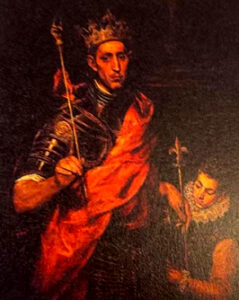 heard among the Mongols, telling him “Do not be afraid to write lengthy letters” (The Mission of William of Rubruck, page 205).
heard among the Mongols, telling him “Do not be afraid to write lengthy letters” (The Mission of William of Rubruck, page 205).
On May 7, 1253, Rubruck embarked on his journey to the Mongols, setting sail from Constantinople, traveling through the Black Sea region of Crimea under conflict, then continuing by land towards the Mongol territories (“Mongol History“, pages 310-311). As previously discussed, he arrived in Batu’s domain on August 5, 1253. However, Batu sent him to see Möngke Khan. After traveling for over three months, by the end of 1253, he finally arrived at Karakorum and met Möngke Khan on January 4 of the following year. Unfortunately, he did not succeed in converting the Mongols to Christianity nor in forming an alliance with the French. So, in August of that year, he had to depart unsatisfied, finally returning to King Louis in Cyprus in June 1255 [right image: A 14th-century manuscript of “The Mission of William of Rubruck”, depicting the mission given by Louis IX to Rubruck and his companion at the top, and the two monks’ journey at the bottom].
Ⅲ
Although Rubruck’s mission was unsuccessful, he engaged in a debate with Eastern religious figures at Karakorum, then the capital of the Mongols. If I am not mistaken, this is the first documented face-to-face debate between Western and Eastern religious figures on fundamental religious doctrines, conducted in front of Möngke Khan. It should be noted that despite the Three Foreign Religions(Zoroastrianism, Manichean and Nestorianism) entering China, the widespread spread of Buddhism, the Nestorian missions, and the expansion of Islam, European Christians and Eastern Buddhists seemingly never faced each other to discuss religious thoughts—at least there are no records of it. This occurrence should secure Rubruck a place in the history of world religions. However, I’m puzzled why most contemporary religious history works, at least those in China, seem to glide over this matter lightly.
According to Rubruck’s own records, he increasingly sensed the alienation and differences in belief between Western and Eastern people along his journey. Upon reaching Soldaia (Sudak) on May 21, 1253, he conveyed the hopes of the French sovereign and Christians to a local official’s representative. On June 5, upon reaching Scatay, he presented a letter from the Emperor of Constantinople to Batu’s relative, engaging in some preaching as well. In August, when meeting Batu by the Volga, he not only conveyed the French king’s goodwill but also boldly preached that unless one was a Christian, they could not attain heavenly wealth. However, as he noted, the Mongols seemed to live in “another world”, where such religious and political messages dissipated like a stone dropped into the sea, met with either silence or laughter. Even when Rubruck handed Batu the letter from King Louis of France, claiming France was “waging war against the Saracens who desecrate God’s Jerusalem residence”, Batu’s response was indifferent, simply directing him to meet Möngke (“The Mission of William of Rubruck”, page 240).
Devoutly, Rubruck, prepared for a face-to-face debate, was determined to convey King Louis’ expectations and the Christian mission to Möngke Khan. After several months of travel, he reached Karakorum, the Mongol capital, in late 1253, where he continuously preached his mission. Even in the next year (1254), while staying in Karakorum, he iterated that he was there “only to preach God’s word”. When asked what he was preaching, he zealously explained the Christian doctrine: “God created the heavens and the earth, holds all nations in his hand. Because of human sins, he transfers power from one nation to another. If one loves God, he will prosper; if not, God will take away everything, even his last coin.” Such statements of absolute Christian superiority could easily be perceived as attempts to elevate the papal authority above Möngke Khan, so the Mongols questioned him, “Are you saying Möngke Khan does not follow God’s 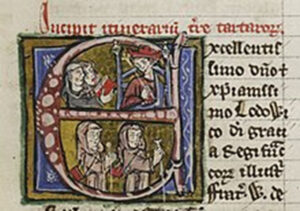 commandments?” Perhaps using a strategy of “deliberately misleading” to capture attention, Rubruck expressed willingness to read God’s commandments in Möngke’s presence to observe his reaction.
commandments?” Perhaps using a strategy of “deliberately misleading” to capture attention, Rubruck expressed willingness to read God’s commandments in Möngke’s presence to observe his reaction.
Indeed, on May 25, 1254, Möngke sent someone to summon him and explain that Karakorum was home to “Christians, Saracens, and Taoists “, including Nestorians. Saracens referred to Muslims, while ” Taoists ” referred to Buddhist monks in the Mongol vernacular. Despite Nestorianism being a branch of Christianity, it was considered heretical earlyon. Möngke’s envoy conveyed that since “each of you claims your doctrine to be the best and your scriptures the truest, he (Möngke) wishes you to gather for a debate, write down your dogmas, so he himself can discern the truth.” Although Rubruck asserted that Christianity prohibits debate, heearnestly prepared, even role-playing as a “Taoist” to practice making arguments proving God’s existence before the debate.
Ⅳ
This first face-to-face exchange on religious doctrines between East and West took place a few days later, on May 30, 1254, the eve of Pentecost. On this day, Rubruck represented Christianity, engaging in debate with Nestorians, Saracens, and Taoists within the church. Möngke appointed three arbitrators—a Christian, a Saracen, and a Taoist—and prohibited any claim that another’s view was inconsistent with God, banning insults and noisy disturbances.
During the debate, they discussed several major issues concerning religious beliefs. A core issue was the nature of God, specifically whether belief should be monotheistic or polytheistic. Rubruck emphasized the existence of one perfect, omnipotent God. However, the Buddhists spoke of various deities below the highest God. Taoists stated, “Only fools believe in one God, but wise men acknowledge many. In your country, are there not many kings? Is Möngke Khan not the greatest of kings? So it is with the divine, as different places have different gods.” Despite the potentially subversive rationale of using Möngke as a stand-in for the multitude of gods, Rubruck remained steadfast, insisting on the singular supremacy of God: “There is no other god besides Him who is almighty.”
This also touched upon another core issue, whether the world is dualistic with good and evil or monistic. Rubruck criticized the Buddhist dualism of good and evil, asserting that influenced by Manichaeism, Taoists believed in dual principles of good and evil, which was incorrect. Buddhists questioned why, if God is all-powerful, did He create “evil.” Rubruck countered, “That’s not true. Evil is not created by God. All existing things are good.”
Ultimately, he queried the Buddhists whether their gods were omnipotent. Taoists initially avoided answering but reportedly under pressure from the arbitrators, conceded none of their gods were omnipotent. Rubruck concluded, “Then you have no god capable of rescuing you in dire situations because there may arise events beyond their capabilities. Furthermore, it’s impossible to serve two masters, so how can you serve numerous gods both in heaven and on earth?”
No Buddhist record exists, but according to Rubruck, Christianity seemed to triumph in the debate. Buddhists reportedly became speechless while Nestorians and Saracens ceased arguing, acknowledging the sole God of Christianity. After the debate, Nestorians and Saracens joined in chorus, while Taoists remained silent, and everyone passionately drank (“The Mission of William of Rubruck”, pages 294-302).
This is Rubruck’s account. The debate’s outcome might not have been as unanimous as he described. The following day, Möngke summoned Rubruck and the other religious representatives for a dialogue. In discussing his beliefs, Möngke stated, “We Mongols believe in one God who controls our lives and deaths, and we sincerely trust him.” Though Rubruck sensed he could interpret this as referring to God and asserted “it should be so, for without His grace, nothing is possible,” Möngke conveyed his view: “But as God has given us five different fingers, He has also given people different paths. God gave you the Bible, yet you Christians do not adhere to it. Is there a record in the Bible mandating people to criticize each other for faults?”
Ⅴ
Möngke implied no religion, including Christianity, should 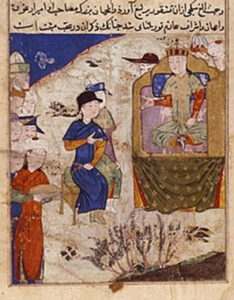 exclude other beliefs, and criticized Christians for being overly self-assured. He remarked, “God therefore gave you the Bible, which you do not follow. He gave us diviners, whose words we abide by, and we live peacefully.” Möngke’s position holds credibility.
exclude other beliefs, and criticized Christians for being overly self-assured. He remarked, “God therefore gave you the Bible, which you do not follow. He gave us diviners, whose words we abide by, and we live peacefully.” Möngke’s position holds credibility.
Reportedly, early Mongols did not have a mature religion but believed in the “Eternal Heaven”, thus embracing diverse religions. The “Mongol History” documents a command from Genghis Khan to the princes, stating, “Do not favor any religion; treat all religious people equally” (page 158). Consequently, in the vast Mongol Empire spanning Eurasia, various religions coexisted, often intermixed. For instance, when Güyük ascended the throne, representatives of the Islamic Caliph and the Pope were invited to the coronation (“New History of Yuan”, volume five “Dingzong”, pages 59-60). Similarly, Möngke Khan, despite participating in sacrificial rituals to heaven and earth in the second year of his reign, reportedly maintained the same religious impartiality observed by Rubruck at Möngke’s ordo in Karakorum, where Nestorians, Saracens, and Buddhists resided together. On Rubruck’s first day in Karakorum, he encountered Nestorians with inked crosses on their hands, worshiping winged figures and praying bishops’ icons. The next day, he met Muslims (Saracens), followed by idol-worshipping monks, who reportedly opened temple doors, donned robes, and offered incense and hanging lanterns at the start of the month. The Mongols maintained simple regulations, with the leader’s word often constituting law, as epitomized by Genghis Khan’s decree that “domestic issues are resolved internally, and external issues in the field” (“New History of Yuan”, volume five “Dingzong”, page 59). Their religious policy was equally straightforward: “treat all religious people equally.” In the event of disputes, sides engaged in debates to argue correctness. However, even if a debate ended with victors and losers, the result was not the absolute end of teaching but rather a mutual dispersion, as with Möngke Khan’s treatment of Christian Rubruck, whom Möngke seemingly disagreed with, yet spared from adversity [right image: (Attributed) Persian miniature of Möngke Khan].
Curiously, shortly after this religious debate, it seems there was a subtle shift in the Mongol Empire’s religious policy. Why such a change occurred remains unclear. Yet, I dare to speculate that it possibly reflects an encounter with a Chinese religion with a nationalistic stance overpowering mere belief. Why? Because in the year following Rubruck’s departure from Möngke’s ordo, another notable religious debate occurred in front of Möngke Khan, this time between Buddhism and Taoism, over the Taoist scripture Huahu Jing.
This particular controversy has been fairly well-studied in academia, but allow me a digression. After the fall of the Northern Song, Taoism, which enjoyed prominence, lost official support, and gradually receded into civilian life in Southern Song China. Meanwhile, under the Jurchens’ Jin dynasty who ruled northern China, various Taoist sects such as Quanzhen Daoism, Dadao Daoism, and Taiji Daoism emerged among the Han people, of which Quanzhen Daoism under leader Wang Zhe (Wang Chongyang, 1113-1170) became the most powerful religious group.
Quanzhen Daoism was adept at navigating between various powers. During Genghis Khan’s western campaigns, Qiu Chuji of Quanzhen Daoism recognized the precariousness of the Jin dynasty and the unreliability of the Southern Song, thus set out from Laizhou, Shandong, traveling long distances to meet Genghis Khan in 1222 at the Hindu Kush. Allegedly, Qiu’s efforts were effective as Genghis Khan entrusted him with authority over all spiritual figures in the empire, including both Taoists and Buddhists. However, the entrenched Chinese notions of ethnic superiority often led to tensions. During the same year (1254) of Rubruck’s Buddhist debate at Karakorum, Taoist leader Li Zhichang of Quanzhen Daoism compiled the Huahu Jing, a text disparaging Buddhism and subtly asserting native Taoism’s superiority over foreign Buddhism, thus presenting Chinese dominance over non-Han cultures and values. This matter was brought to Möngke’s attention, and in the following year (1255), he organized a debate between Li Zhichang and Buddhist master Fuyu, resulting in the decisive defeat of Taoists and Möngke decreeing the Huahu Jing to be banned and burned. Möngke stated that initially, “Buddhism and Tao do not hinder each other”, but accused Taoists of attempting “monopoly and exclusion”, contrary to the Mongolian principle of “equal treatment for all religions”.”Now, Sir says the Taoist path reigns supreme, scholars claim Confucianism is the foremost, (Nestorian) Tersa believes in Messiah, (Islamic) Dānishmands pray to the Almighty Allah, and Buddhists proclaim Amitabha promises heavenly ascension Möngke then articulated that a balanced foundation eludes superiority, laying the grounds for the burning of the contentious Taoist text.
This was not an isolated instance; further debates were commissioned subsequently during the reigns of Möngke’s eighth year (1258) and Kublai Khan’s twenty-second year (1281). These proceedings culminated in the systematic suppression of Taoism.
Ⅵ
 In 1254, the Karakorum palace of Möngke Khan, as depicted by many historians and archaeologists, was a much-debated site. At the time, following Soviet scholar V.N. Tkachev’s description, it was a city blending both sedentary and nomadic lifestyles (“Mongolian Studies Materials and Reports”, 1991, No. 1), comprising modest palaces and yurts, with workshops, marketplaces, and residences. Though resistant to the notion of settling, indicative of cowardice and detrimental to hunter and herder dignity, the transition from nomadic to sedentary life increasingly prevailed as the victorious pursued more comfortable, stable existences. Thus, Karakorum rose as a central metropolis with political, social, and religious functionalities. Rubruck’s account mentions a diversity of religious temples in Karakorum. Reportedly, Möngke treated all religions with an open mind, visiting chapels and perusing Rubruck’s Bible, permitting Christians to raise the cross above their heads, and declaring that they may worship as they choose. Even after the debate, Möngke maintained Genghis Khan-era religious tolerance.
In 1254, the Karakorum palace of Möngke Khan, as depicted by many historians and archaeologists, was a much-debated site. At the time, following Soviet scholar V.N. Tkachev’s description, it was a city blending both sedentary and nomadic lifestyles (“Mongolian Studies Materials and Reports”, 1991, No. 1), comprising modest palaces and yurts, with workshops, marketplaces, and residences. Though resistant to the notion of settling, indicative of cowardice and detrimental to hunter and herder dignity, the transition from nomadic to sedentary life increasingly prevailed as the victorious pursued more comfortable, stable existences. Thus, Karakorum rose as a central metropolis with political, social, and religious functionalities. Rubruck’s account mentions a diversity of religious temples in Karakorum. Reportedly, Möngke treated all religions with an open mind, visiting chapels and perusing Rubruck’s Bible, permitting Christians to raise the cross above their heads, and declaring that they may worship as they choose. Even after the debate, Möngke maintained Genghis Khan-era religious tolerance.
However, the following year (1255), regarding the Buddhist-Taoist controversy, Möngke expressed not only emotional favoritism but also enacted policy alignment. What could explain this shift? Some scholars speculate that behind this pro-Buddhist, anti-Taoist change lies an ethnic and cultural recognition dynamic between Han and non-Han peoples, highlighted by Chen Yuan in 1941 in “A Study on New Taoism in Hebei in Early Southern Song“, asserting that Quanzhen Daoism was initially intended “to avoid servitude to new regimes”, symbolizing a Han nationalistic stance from its inception (Chen Yuan, “A Study on New Taoism in Hebei in Early Southern Song”, “Chen Yuan Anthology” (Hefei: Anhui University Press, 2010), Volume 18, pages 411-412). The debate over Huahu Jing occurred precisely when Mongol focus shifted from the West to the East, eyeing rapid conquest of the Southern Song, facing challenges from Han people asserting supremacy of Chinese civilization. Thus, the suppression of the ethnically conscious Taoism during the Mongol reign likely bore ethnic undercurrents, compounded by the Huahu Jing’s derogatory connotations towards non-Han peoples.
From this time forward, while Mongol rulers continued to administrate religion without stringent control, policy increasingly departed from a universal egalitarian religious freedom (“treat all religious people equally”), favoring certain religious preferences as seen in the familiar strategy of “promoting Tibetan Buddhist sects [DZ1] , suppressing (Han)Buddhist Zen”. After all, in the sphere of Chinese cultural and territorial perceptions, distinctions between noble and foreign, Han and non-Han, were pronounced, eliciting strong reactive sentiments from foreign overlords.
In the eighth year of Möngke (1258), Hülegü (1217-1265) led Mongol advances westward, capturing Baghdad, seizing the Caliphate, extinguishing the Abbasid Caliphate, and founding the Ilkhanate, one of four prominent Mongol ulus. Concurrently, Möngke and Kublai began refocusing eastward; in February of that year, they launched an extensive offensive against the Southern Song, with Möngke attacking Sichuan and Kublai targeting Hubei. Möngke died in the field the subsequent year, Kublai temporarily withdrew north, but soon upon ascension resumed campaigns south, engaging in nearly two decades of warfare with the Song and eventually conquering Southern Song completely in 1279.
As Hülegü ventured towards Western Asia and Northern Africa, and Möngke and Kublai pressed into East Asia, Europeans found temporary respite. However, the interaction between the Christian world and the Mongols did not cease. In 1259, Berke Khan of the Golden Horde demanded submission from the French King, while in 1262, the Ilkhanate ruler Hülegü sent a letter to the French king, perhaps aware of the humiliation Louis IX suffered in captivity, seeking his help against the Egyptian Mamluks. Hülegü attempted to extend friendship to Christians, announcing plans to release all enslaved Christians. It is said that Hülegü’s overtures were partly driven by the necessity for naval vessels to assault Egypt, hence his entreaty to Louis; nonetheless, the French King rejected Hülegü’s request, resulting in a costly feud when Hülegü’s ambitions against Egypt faced setbacks inflicted by Berke, fellow kinsman of the Golden Horde. In “The New History of Yuan”, a notable anecdote records, “Hülegü founded a state in Persia, allied with Byzantium, and wanted to marry their princess, but received a private-born daughter, Maria” (page 4830), though its accuracy remains debated.
Persistent interaction between Mongols and Europeans continued until Hülegü’s grandson Arghun’s reign. In May of this year, while staying briefly in Paris, I heard of an exhibition “The Kingdom of France and the Mongol Empire” (Le Royaume de France et L’Empire Mongol) in Nantes. Unfortunately, the exhibit had already ended by the time I learned of it. A benevolent friend shared photographs from the exhibition catalog: the showcase included the original letter from Arghun, ruler of Persia under Mongol governance, to King Philip of France. The document bore the imperial seal “The Precious of Assisting the Nation and Comforting the People”, granted by Kublai for use by the Ilkhanate [left image: Arghun’s letter to the King of France]. By now, it was 1289, nineteen years posthumous for Louis IX, Kublai Khan had unified East Asia for ten years, marking the Yuan era’s twenty-sixth year. Also in that year, Pope Nicholas IV (Girolamo Masci, 1227-1296), after thorough contemplation, dispatched Giovanni da Montecorvino, the first papal envoy to China, to Persia under the Ilkhanate and Khanbaliq (Beijing), initiating Roman Catholic missions in China.
Reflecting on William of Rubruck now, evokes mixed sentiments. Though he did not accomplish the French king’s goal of aligning with the Mongols or converting them to Christianity, he introduced European Christianity’s doctrines at a Mongol court and facilitated the first documented East-West religious exchange; his journey coupled with later accounts from Marco Polo also jointly bridged cultural gaps.
August 26, 2024 – First Draft in Shanghai
[References]
“The Journey of William of Rubruck and John of Plano Carpini” (Combined Volume; translated by He Gaoji, Beijing: Zhonghua Book Company, 1985, 2002)
“The Mongol History by D’Ohsson” (Collected Translations by Feng Chengjun, Shanghai Ancient Books Publishing House, 2014)
“Chronica Majora” by Matthaeus Parisiensis, seven volumes (translated from Latin, John Allen Giles, 1852 edition)
“Saint Louis” by Jacques Le Goff (translated by Xu Minglong, Beijing: The Commercial Press, 2011)
“Overview of 13th Century East-West Relations” by Iwamura Shinobu (Tokyo: Sanshodou Shoten, 1939)
[DZ1]扬教抑禅,“教”指的是藏传佛教,
Tibetan Buddhism





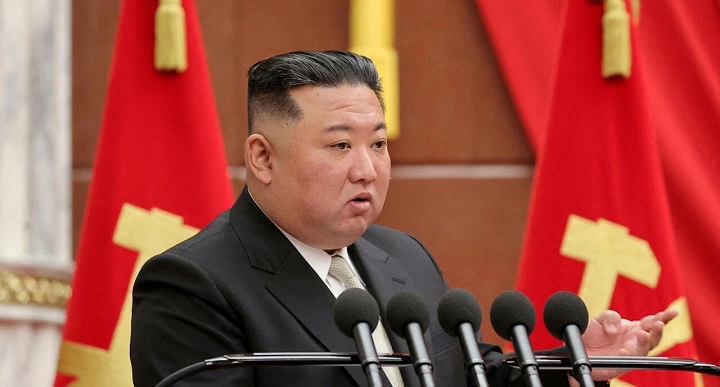
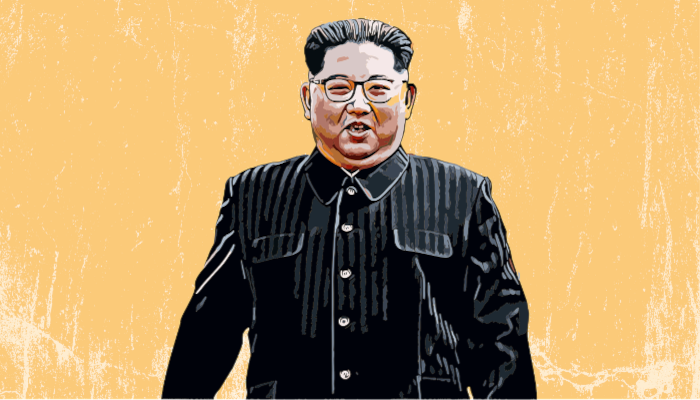

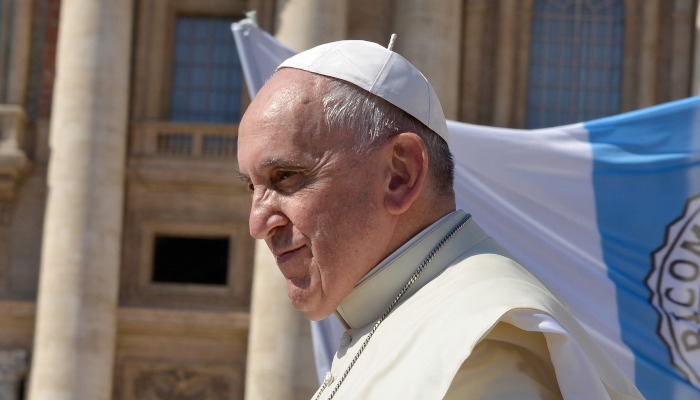
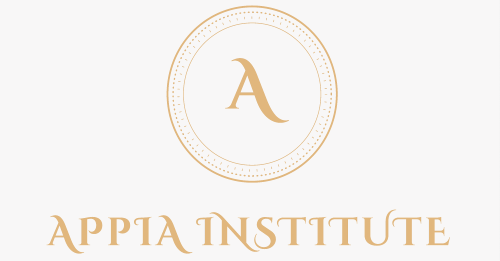
Debate in Front of Möngke Khan: Eastern and Western Religions Face-to-Face - SettimanaNews